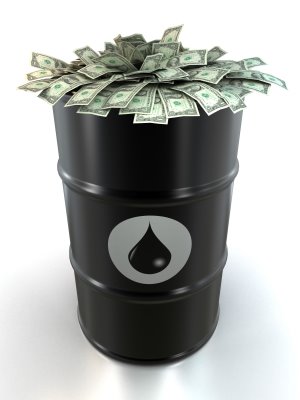
Senate Fails to Cut Favors to Big Oil, Once Again
 Earlier today President Obama challenged Congress to either stand with Big Oil, or stand with the American people. A vote on legislation introduced by Senator Robert Menendez (D-NJ) that would have eliminated over $2.4 billion in annual tax deductions to the top 5 oil companies was subsequently defeated a few hours later.
Earlier today President Obama challenged Congress to either stand with Big Oil, or stand with the American people. A vote on legislation introduced by Senator Robert Menendez (D-NJ) that would have eliminated over $2.4 billion in annual tax deductions to the top 5 oil companies was subsequently defeated a few hours later.
Once again Congress has voted with the money over the many.
The dirty details:
The 47 Senators that voted against repealing subsidies for the five biggest oil companies have taken four times more money in campaign contributions from oil since 1999 than the 51 senators who voted for the repeal. (The vote was actually supported by a majority of the Senate 51-47 but required 60 to pass due to a filibuster.)
In the current Congress they took nearly twice as much from oil companies than the 51 who voted to repeal Big Oil’s subsidies.
On average, a Senator that voted against repealing Big Oil’s subsidies has taken 330% more from oil companies since 1999 and 220% more in the current congress.
 Cutting $2.4 billion in subsidies annually to the biggest companies – BP, Chevron, ConocoPhillips, ExxonMobil and Shell – might seem like a solid initial step. But it’s just the tip of the iceberg. The oil and gas industry receives at least $10 billion annually in special favors.
Cutting $2.4 billion in subsidies annually to the biggest companies – BP, Chevron, ConocoPhillips, ExxonMobil and Shell – might seem like a solid initial step. But it’s just the tip of the iceberg. The oil and gas industry receives at least $10 billion annually in special favors.
“Independent” oil and gas companies not included in the Menendez bill aren’t exactly “mom & pop shops”. There ain’t no Christmas cookies coming your way for supporting the corner oil and gas industry. These are major outfits including Koch Industries, Occidental, Marathon, Murphy Oil and many more. The top five independent companies – none of which were targeted by today’s vote – are collectively worth $178 billion. Of the top 86 publicly listed independent oil industries, 56 had market capitalizations of over $1 billion in 2011. In 66 of these 86 companies the CEO’s salary was over $4.8 million in 2009. While efforts to start shaving off special benefits to individual actors might have some impact, we need to root this cancer out at the core.
We need to do much more than make symbolic gestures. It’s time for a real effort to cut the apron strings on an industry that’s doing just fine on it’s own. Consider these facts:
1. Big Oil makes money.
Subsidies make sense when they foster the growth of a new industry. They are intended to be a temporary crutch to enable companies to find their footing until they can be competitive on their own. With oil prices exceeding $100 per barrel, U.S. oil production is hugely profitable. The five biggest oil companies made $137 billion in 2011 alone. Most independently-owned companies that produce oil and gas in the U.S. have market capitalizations in the hundreds of millions and multi-billion dollar range. How is this a sector that continues to need taypayer support?
2. Subsidies don’t lower gas prices.
Our vulnerability to high gas prices has been a fact since the 1970s, and no amount of additional drilling or subsidies is going to change that. The global oil market, not the domestic industry, determines gasoline prices. The only way to end our vulnerability to high gas prices is to end our dependence on all oil, not just foreign oil. According to the Treasury Department, removing these domestic subsidies will reduce U.S. oil production less than one half of one percent, and will increase exploration and production costs less than two percent. Considering the price that the domestic industry receives for crude has more than doubled over the past several years, the industry should be able to afford that – without laying anyone off or jacking up the price at the pump.
So why are we debating half measures? It’s time to cut the ties between Big Oil and our decision makers, and focus on the transition to clean energy.
Find out more:
Factsheet: Ending Federal Subsidies to the Oil Industry. Oil Change International. March 2012.
The Big, the Bad and the Subsidized, by Lorne Stockman. Oil Change International. February 2012.
Dirty Energy Money website
